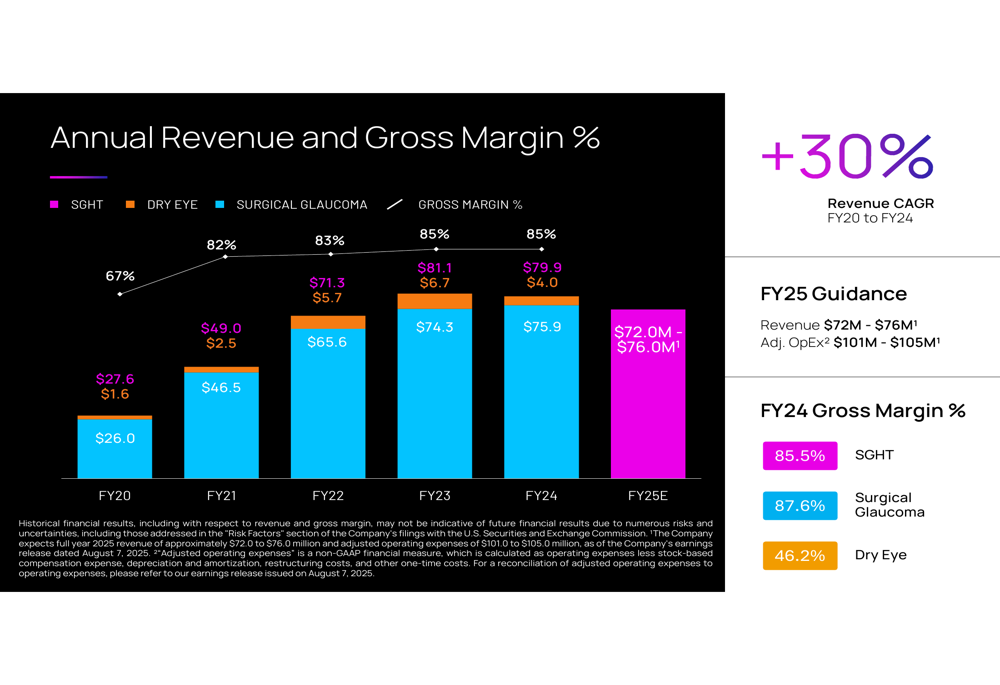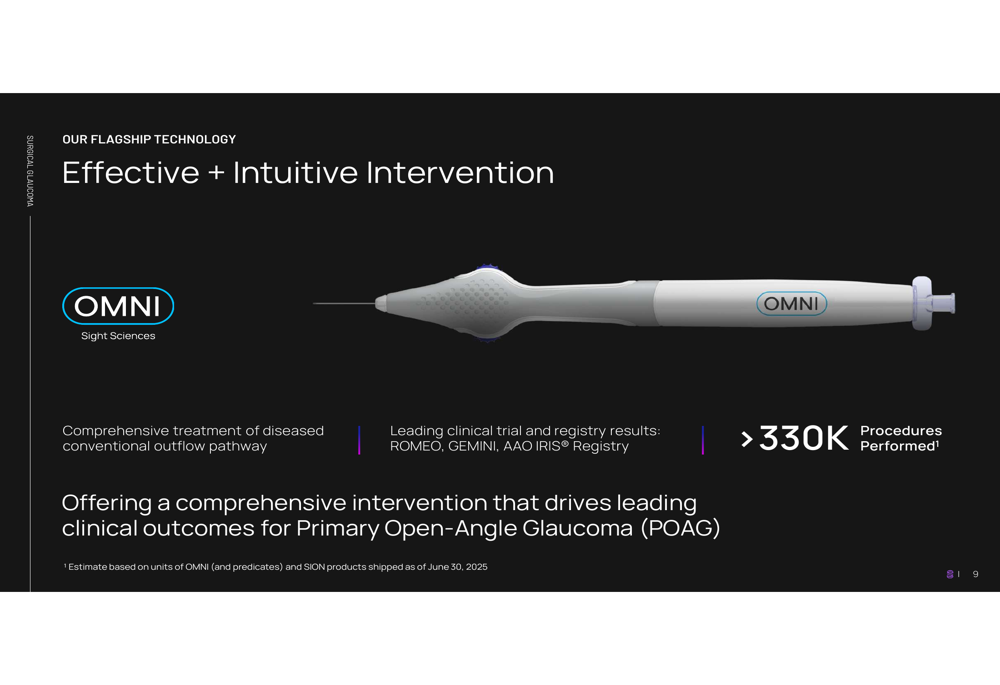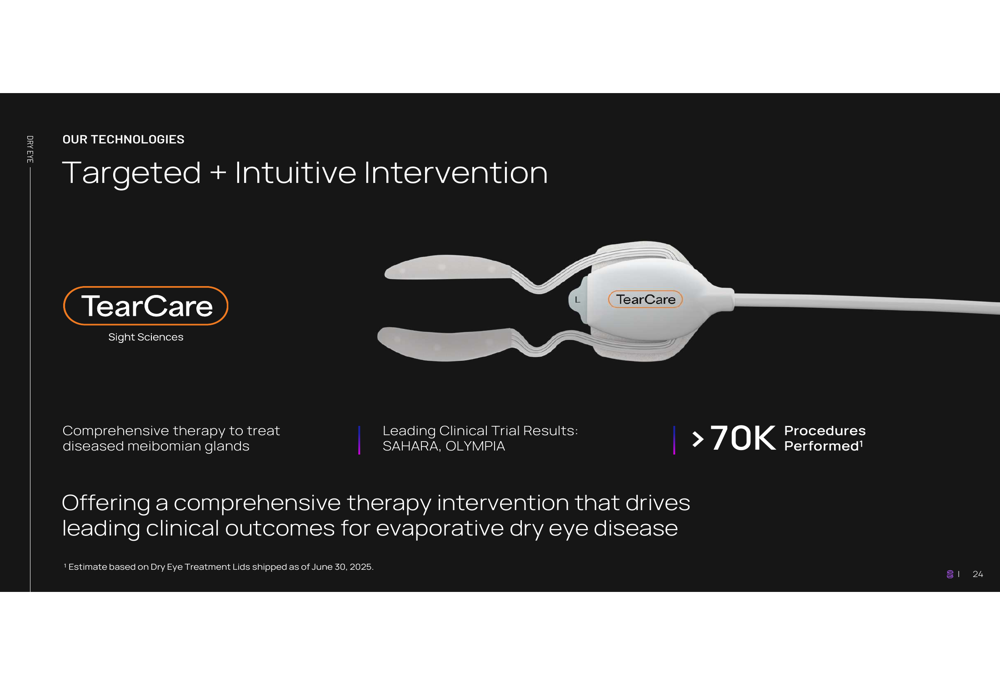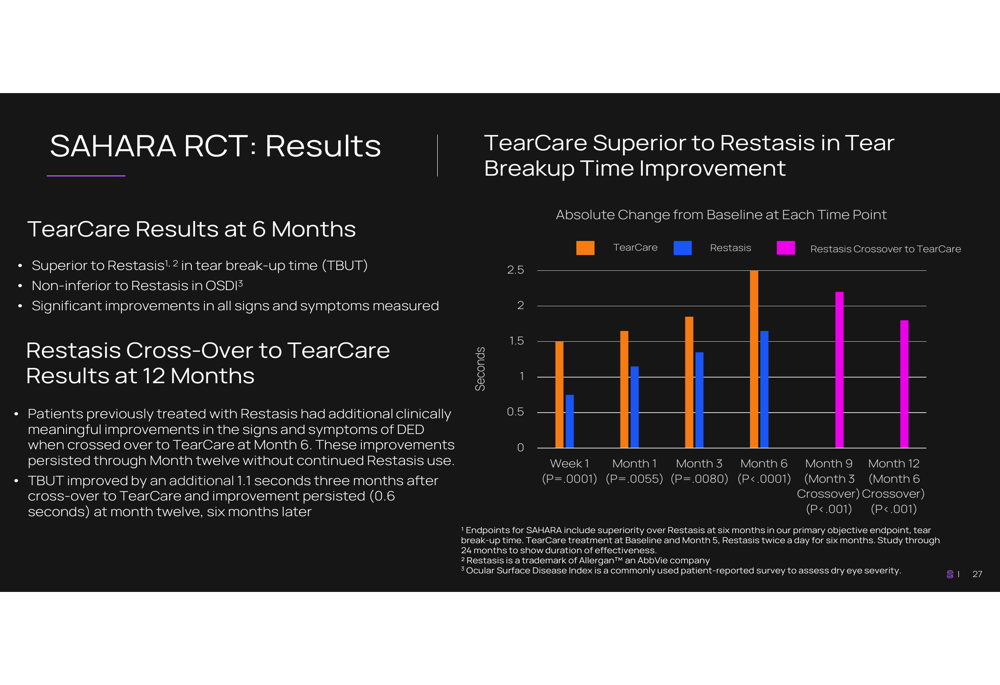Trump meets Zelenskiy, says Putin wants war to end, mulls trilateral talks
Introduction & Market Context
Sight Sciences (NASDAQ:SGHT) presented its August 2025 investor slides highlighting the company’s strategic positioning in two substantial eye care markets: glaucoma and dry eye disease. The presentation comes on the heels of the company’s Q1 2025 earnings report, where it posted a net loss of $0.28 per share, missing analyst expectations of $0.23 per share, with revenue declining 9% year-over-year to $17.5 million.
Despite these challenges, Sight Sciences continues to emphasize its long-term growth potential in what it identifies as a combined $9 billion addressable U.S. market. The company’s stock closed at $3.55 on August 7, 2025, showing some recovery from its 52-week low of $2.03, though still well below its 52-week high of $7.05.
Executive Summary
Sight Sciences positions itself as an "innovation leader in two large, growing, underserved markets" with a mission to "develop transformative, interventional technologies that allow eyecare providers to procedurally elevate the standards of care." The company’s strategy focuses on shifting from medication management to interventional approaches for both glaucoma and dry eye disease.
The company’s flagship products include the OMNI Surgical System for glaucoma treatment and the TearCare system for dry eye disease. Both products have substantial clinical evidence supporting their efficacy and have achieved significant market penetration, with over 330,000 OMNI procedures and 70,000 TearCare procedures performed to date.
As shown in the following presentation slide, Sight Sciences has identified five key strategic elements that form the foundation of its investment thesis:

Detailed Financial Analysis
Despite the recent quarterly revenue decline, Sight Sciences highlights its long-term growth trajectory with a 30% revenue CAGR from FY20 to FY24. The company maintains strong gross margins, particularly in its Surgical Glaucoma segment (87.6%), while the Dry Eye segment shows lower but still substantial margins (46.2%).
For FY25, the company projects revenue between $72-76 million, with adjusted operating expenses of $101-105 million. This guidance appears slightly more optimistic than the $70-75 million range mentioned in the Q1 earnings report, suggesting potential improvement in the coming quarters.
The following chart from the presentation illustrates the company’s historical revenue growth and gross margin performance:

This financial data shows the company’s revenue increasing from approximately $27 million in FY20 to about $70 million in FY24, with gross margins improving from around 68% to 85.5% during the same period. The high gross margins provide some cushion as the company works to expand market adoption of its products.
Glaucoma Market Strategy
Sight Sciences identifies glaucoma as a $6 billion addressable U.S. market with over 4 million diagnosed patients. The company’s OMNI Surgical System targets Primary Open-Angle Glaucoma (POAG) by addressing blockages in the eye’s natural drainage system.
As illustrated in the following slide, the OMNI system is designed to provide comprehensive treatment of the conventional outflow pathway in the eye:

A key strategic focus for Sight Sciences is expanding into the standalone MIGS (Minimally Invasive Glaucoma Surgery) market, which represents over 85% of POAG eyes but less than 10% of current MIGS procedures. The company believes this segment presents a significant growth opportunity, particularly for pseudophakic patients (those who have already undergone cataract surgery).
The clinical efficacy of the OMNI system is supported by multiple trials, including ROMEO, GEMINI, and TREY, which demonstrate sustained reductions in intraocular pressure and medication use. The following slide summarizes these clinical results:

Dry Eye Disease Strategy
In the dry eye disease market, Sight Sciences targets an estimated $3 billion addressable U.S. opportunity with over 19.4 million diagnosed patients. The company’s TearCare system specifically addresses Meibomian Gland Disease (MGD), which affects 13.6-16.7 million U.S. patients.
The TearCare system is designed to provide interventional treatment for MGD by melting and evacuating obstructions in the meibomian glands. The following slide showcases the TearCare technology:

A significant competitive advantage for TearCare is its demonstrated clinical superiority to Restasis (cyclosporine) in the SAHARA randomized controlled trial. The trial showed better improvement in tear breakup time with TearCare compared to Restasis, with effects lasting up to 24 months. These results are illustrated in the following chart:

Strategic Initiatives
Sight Sciences outlines several strategic initiatives aimed at driving future growth. For the OMNI system, these include certifying new surgeons, gaining share in the combination cataract segment, developing the standalone pseudophakic MIGS segment, generating additional clinical evidence, enhancing coverage and reimbursement, and expanding internationally.
For TearCare, the company is focused on pursuing coverage and equitable reimbursement, generating additional clinical evidence, growing its commercial team, and expanding adoption and usage. The company specifically mentions "near-term catalyst expected in TearCare market access" as a key investment consideration.
Forward-Looking Statements
While Sight Sciences presents an optimistic outlook in its investor slides, the recent Q1 2025 performance indicates ongoing challenges in translating market opportunity into consistent revenue growth. The company faces headwinds including Medicare LCD restrictions on multiple MIGS procedures, tariff exposure requiring manufacturing adjustments, and intense competition in both the MIGS and dry eye markets.
Nevertheless, the company’s strong gross margins, substantial clinical evidence, and focus on large, underserved markets provide a foundation for potential recovery. The stock’s recent performance suggests investors may be beginning to recognize this potential despite the Q1 earnings miss.
As Sight Sciences continues to execute its strategic initiatives, particularly around expanding OMNI utilization and improving TearCare market access, investors will be watching closely to see if the company can return to its historical growth trajectory and capitalize on the substantial market opportunities it has identified.
Full presentation:
This article was generated with the support of AI and reviewed by an editor. For more information see our T&C.
